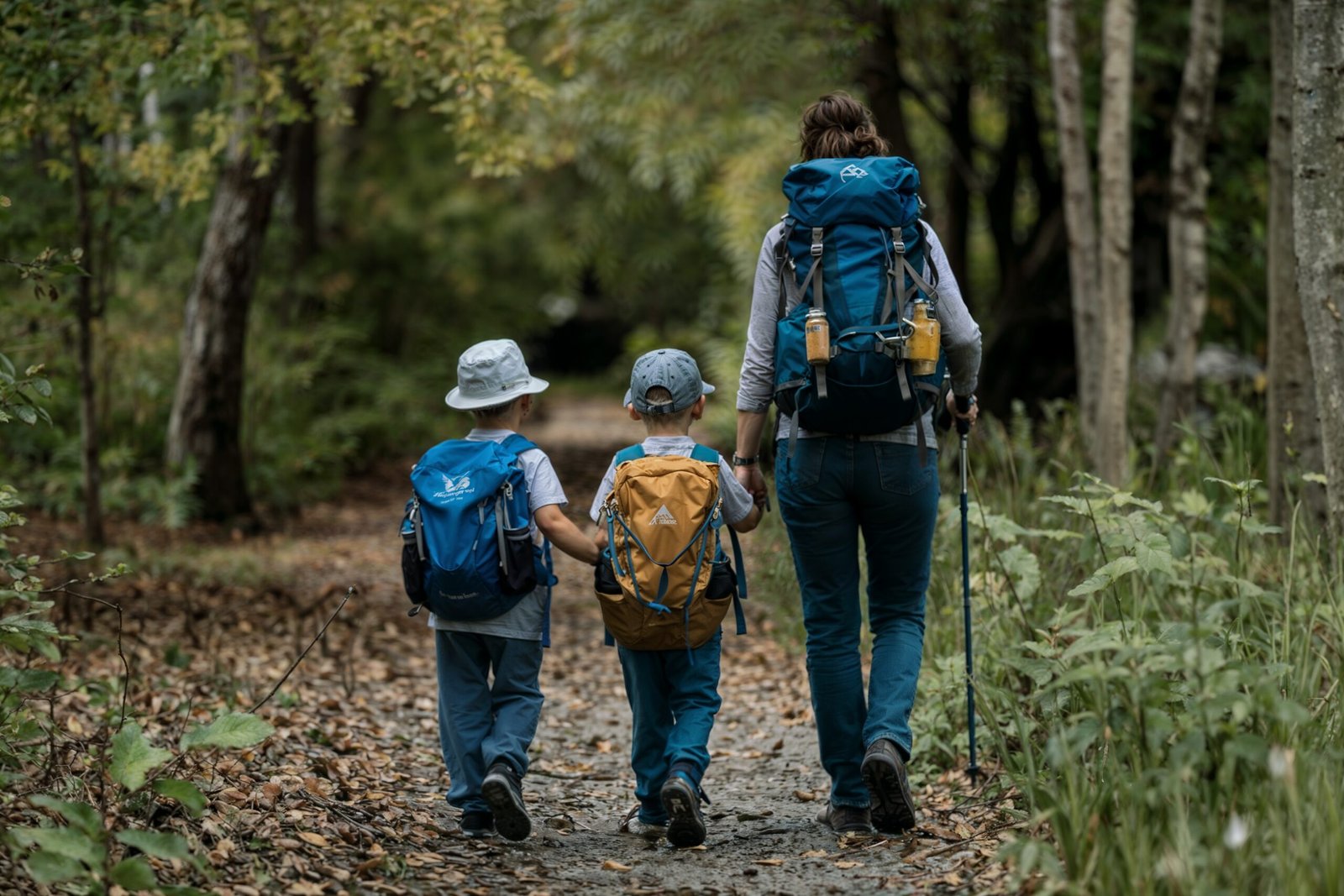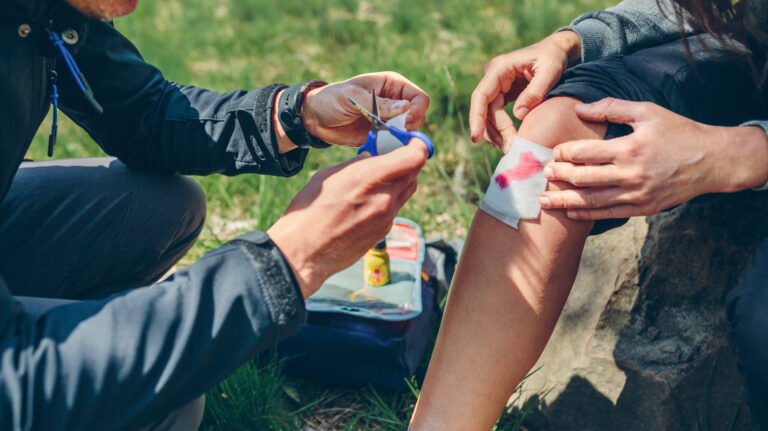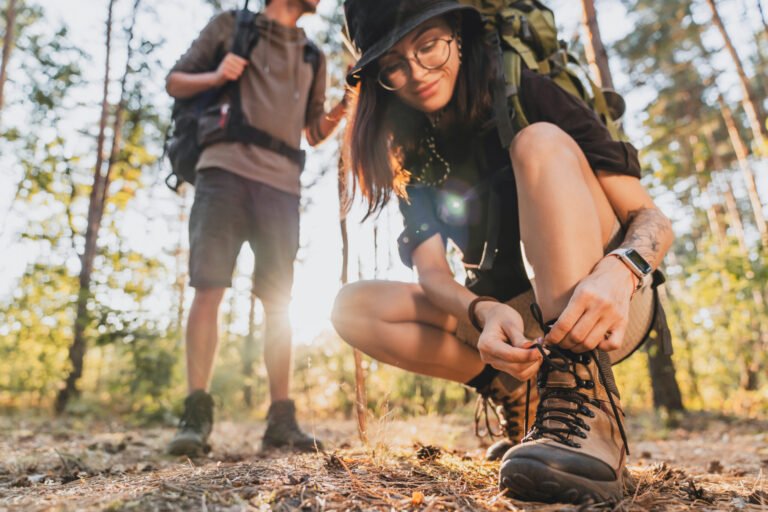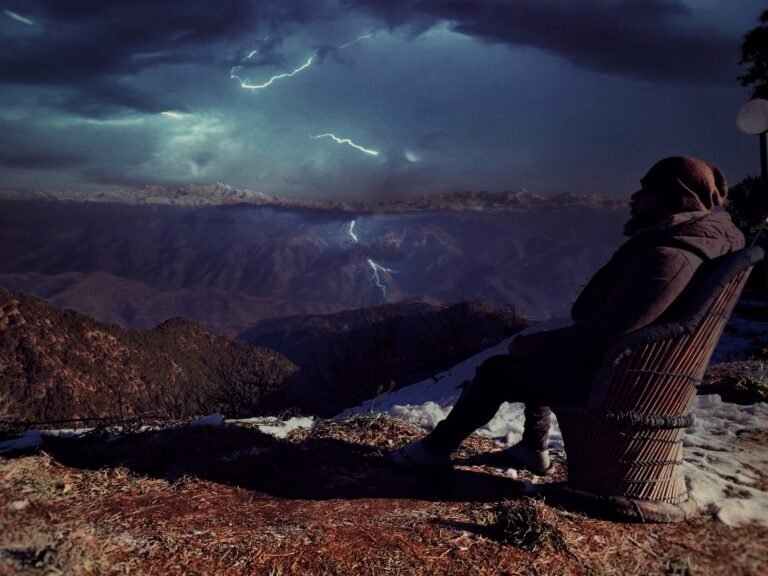Hiking Safety with Children: Keeping Kids Safe on Trails
Learn Hiking Safety with Children: Expert tips on keeping kids safe on trails. Discover essential strategies for a fun family hike.
Have you ever wondered if you’re truly prepared for the unexpected twists and turns that come with hiking in the great outdoors with your kids? One family’s experience on a backpacking trip in Olympic National Park serves as a poignant reminder of the importance of staying vigilant when exploring nature with children.
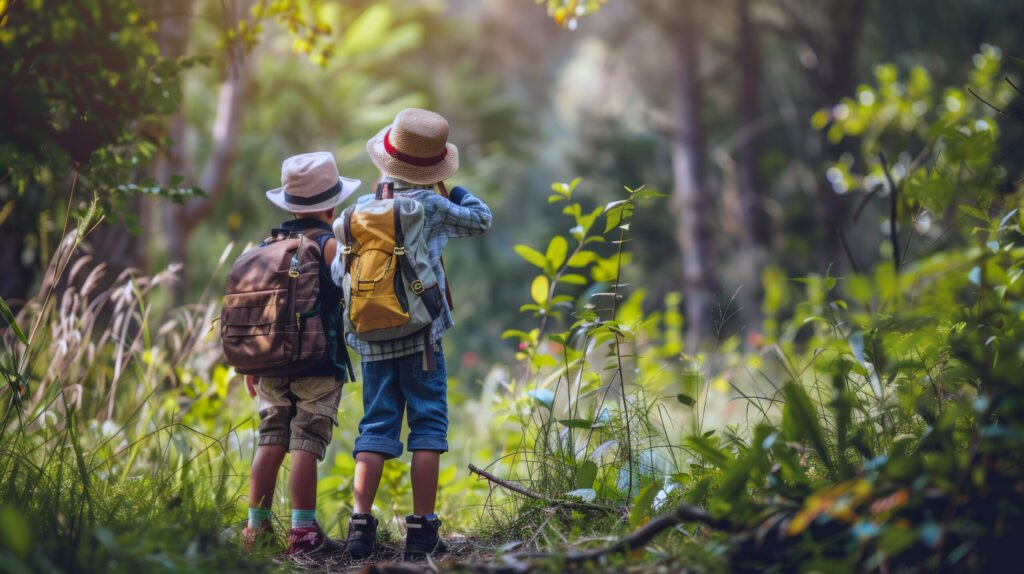
A moment of distraction, and a child can wander off into the woods, sparking a mix of fear and panic in parents. This scenario highlights the need for awareness and preparedness to ensure family safety on the trails.
This guide will walk you through essential strategies for keeping your kids safe while enjoying the beauty of nature together, covering everything from pre-hike preparation to emergency protocols.
Why Hiking Safety with Children Matters
As a family, hiking can be a great way to spend quality time together, but it’s essential to be aware of the potential risks involved. Hiking with children can be a wonderful adventure, offering numerous benefits while also presenting unique challenges.
Benefits of Family Hiking
Family hiking trips provide an excellent opportunity for kids to connect with nature, promoting physical activity and mental well-being. It fosters a sense of togetherness and can be a great way to teach children about the environment and outdoor skills.
Common Risks and Challenges
Despite the many benefits, hiking with a child can also demonstrate the dangers of nature. Unpredictable weather changes, physical hazards like steep drop-offs, and wildlife encounters are some of the risks families may face on the trail. Ensuring safety is paramount to prevent accidents and make the experience enjoyable for everyone.
Some common risks include children getting separated from the group, dehydration, and fatigue. Being prepared and vigilant can mitigate these risks, making the hike a positive experience for all.
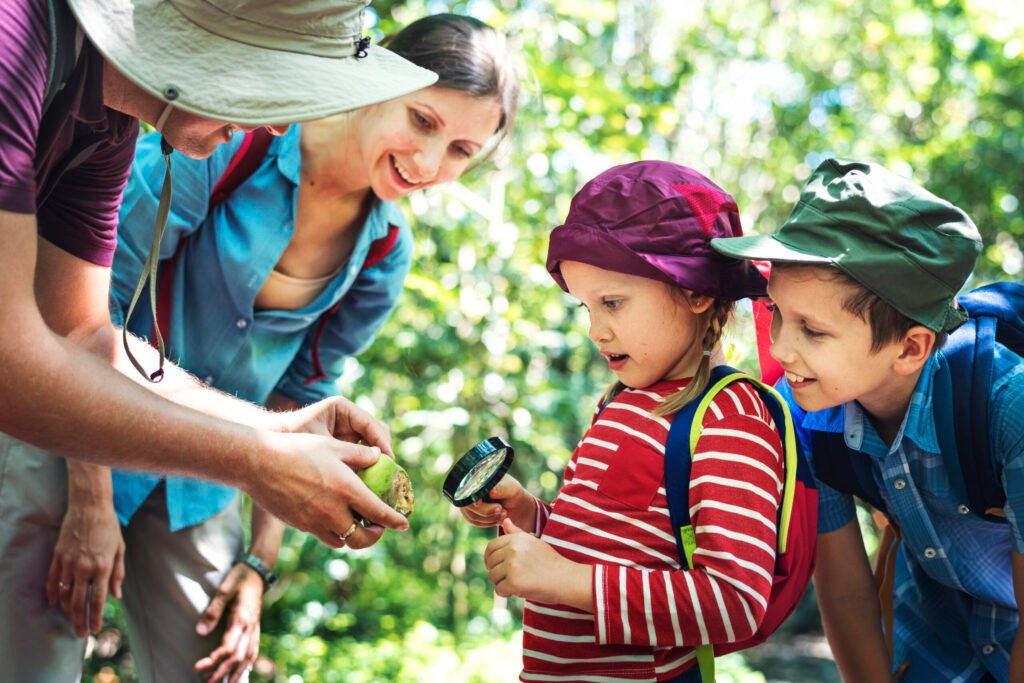
Essential Preparation Before the Hike
Before embarking on a family hike, it’s crucial to prepare adequately to ensure a safe and enjoyable experience for all. This preparation involves several key steps that will help make your hiking trip a success.
Planning Age-Appropriate Trails
Choosing a trail that suits your children’s ages and abilities is vital. For younger children, shorter trails with minimal elevation gain are often best. As children get older, they can handle longer, more challenging hikes. Research trails in your area and read reviews to find ones that fit your family’s needs. Consider factors like distance, terrain, and potential hazards when making your decision.
Involving Kids in the Planning Process
Involving your kids in the planning process can increase their excitement and investment in the hike. Let them help choose the trail, and encourage them to research the area. This can be a great learning experience, teaching them about geography, nature, and planning. You can also use this opportunity to discuss the importance of trail etiquette, such as staying on the trail and respecting other hikers, as highlighted on Trail Etiquette.
Creating a Family Hiking Checklist
A comprehensive family hiking checklist is essential to ensure you don’t forget crucial items. Customize your list based on the trail difficulty, weather, and trip length. Essentials include clothing layers, at least 16 oz of water per person per hour of hiking, nutritious snacks, first aid supplies, navigation tools, and emergency communication devices. For kids, add comfort items, extra snacks, and child-specific first aid supplies.
| Item | Quantity | Notes |
|---|---|---|
| Water | At least 16 oz per person per hour | Stay hydrated |
| Snacks | Varies | Nutritious options |
| First Aid Kit | 1 per group | Include child-specific supplies |
Establishing Trail Rules and Safety Protocols
To ensure a safe hiking experience for kids, it’s vital to establish trail rules and safety protocols. This involves several key steps that help prevent accidents and ensure that children are prepared for the hike.
Setting Clear Boundaries
Setting clear boundaries is essential for keeping children safe on the trail. This includes defining areas where children are allowed to roam and establishing rules for staying within sight of an adult. Dressing children in brightly colored clothing can also help in keeping them visible.
Designating Adult Supervision Roles
Designating adult supervision roles is crucial for maintaining safety. Adults should be assigned to lead, follow, and watch the children, ensuring that no child is left unattended. This helps in quickly responding to any emergencies.
Teaching Children to Stay Visible
Teaching children to stay visible is vital, especially in dense foliage or low-light conditions. This can be achieved by dressing them in high-visibility colors like orange, yellow, or red, making it easier for search teams to locate them if they get lost.
| Safety Measure | Description | Benefit |
|---|---|---|
| Dressing in Bright Colors | Dress children in orange, yellow, or red | Easier to spot on the trail and by search teams |
| Responding to Names | Teach children to respond to their names | Helps in quickly locating them if separated |
| Using Whistles | Establish a whistle code for emergencies | Effective way to signal for help |
By implementing these trail rules and safety protocols, families can enjoy a safer and more enjoyable hiking experience. It’s about making sure that children are aware of their surroundings and know how to react in case of an emergency.
Essential Gear for Hiking with Children
When venturing into the great outdoors with children, it’s crucial to be well-prepared with the right gear. Hiking with kids can be a wonderful experience, fostering a love for nature and promoting physical activity. However, it requires careful planning and packing the appropriate equipment to ensure everyone’s safety and comfort.
What Kids Should Carry in Their Pockets
It’s a good idea to have kids carry some essentials in their pockets to keep them prepared for minor needs during the hike. These can include snacks, a small first-aid kit, and a map or compass. For more information on what to pack, you can refer to resources like essential hiking gear for kids.
What Kids Should Pack in Their Backpacks
Kids’ backpacks should be equipped with essentials that can help them throughout the hike. This includes extra clothing, water, and emergency shelter or a space blanket. Make sure they understand the importance of staying hydrated and having a change of clothes in case they get wet.
Weather-Appropriate Clothing
Dressing children in layers is key to maintaining their comfort in varying weather conditions. A base layer to keep them dry, an insulating layer for warmth, and a waterproof outer shell to protect against rain are essential. Don’t forget hats and gloves, even in summer, as mornings can be chilly. Rain gear should always be packed, as weather can change rapidly.
By focusing on these aspects, you can ensure a safe and enjoyable hiking experience for your children, teaching them valuable skills and a deeper appreciation for the outdoors.
Teaching Children Outdoor Survival Skills
Outdoor survival skills training for kids is not just about safety; it’s also about enhancing their hiking experience. By teaching children these essential skills, parents can ensure that their kids are well-prepared for the challenges they may face on the trail.
STOP Method for Lost Children
The STOP method is a simple yet effective technique for lost children to follow: Stop and stay calm, Think about your situation, Observe your surroundings, and Plan your next steps. This method helps children to remain calm and think clearly, increasing their chances of being found or finding their way back.
Using Whistles and Signals
Teaching children to use whistles and other signaling devices is crucial in case they become lost. The international distress signal is three short blasts on a whistle, followed by a pause, and then three more blasts. This signal can help alert others to their location. It’s also essential to teach kids to stay visible by wearing bright clothing and to avoid hiding in dense areas.
Basic Navigation and Orientation Skills
Basic navigation skills are vital for kids to learn, including understanding how to use a map, identifying cardinal directions, and recognizing landmarks. By teaching children these skills, parents can empower them to navigate the trails confidently.
| Skill | Description | Age Group |
|---|---|---|
| Cardinal Directions | Understanding how to identify directions using the sun or a compass. | 6-8 years |
| Map Reading | Learning to read and understand trail maps. | 8-10 years |
| Landmark Recognition | Identifying notable features on the trail to aid navigation. | 6-12 years |
By teaching children outdoor survival skills, parents can help ensure a safe and enjoyable hiking experience for the whole family.
What to Do If Your Child Gets Separated
As a parent, there’s no worse fear than losing your child, especially in the great outdoors. Even with careful supervision, it’s easy for children to wander off or become disoriented on hiking trails. Knowing how to respond in such a situation is crucial for a safe reunion.
Creating a Written Emergency Plan
Before you head out on a hike, it’s essential to create a written emergency plan that includes vital information such as your child’s name, your contact details, and any relevant medical conditions. This plan should be shared with all family members, so everyone knows what to do in case of separation.
Instructions for Children Who Get Lost
Teach your children what to do if they get lost. They should stay calm, stay put, and use a whistle to signal for help. It’s also a good idea to teach them basic survival skills, such as finding or purifying water.
How Parents Should Respond
If your child gets separated from you, remain calm and follow the established rules and protocols. Call out for your child and use whistle signals. One adult should stay at the point of separation while others search the area systematically. If your child isn’t found quickly, contact local authorities or park rangers immediately, providing them with critical information about your child’s last seen location and any medical conditions.
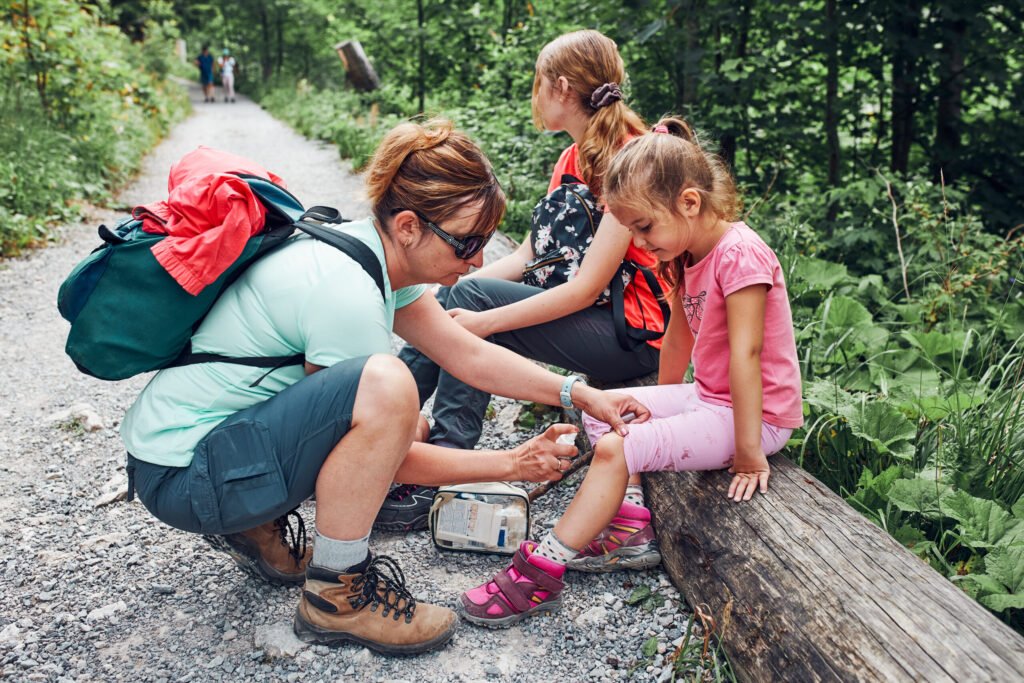
Making Hiking Safe and Fun for the Whole Family
To ensure that hiking remains a positive experience for children, it’s essential to strike a balance between safety and enjoyment. The key to a successful family hike is to keep kids motivated and having fun.
One effective way to achieve this is by incorporating games and educational activities into your trail adventures. For instance, you can create a scavenger hunt that encourages children to explore their surroundings, identifying wildlife signs, counting wildflower species, or finding objects that fit certain criteria, such as being bumpy, smelly, or wet.
By making hiking enjoyable for kids, you increase their engagement with safety practices. This approach not only reinforces important outdoor skills but also fosters a deeper appreciation for nature. As you share in these experiences, you’ll be helping your children develop a sense of adventure and responsibility.
Some key takeaways to keep in mind include:
- Making hiking enjoyable for children increases their engagement with safety practices.
- Incorporating games and challenges into hikes keeps kids engaged while reinforcing important skills.
- Creating family hiking traditions builds children’s confidence and competence over time.
By following these tips and making hiking a fun, family-oriented activity, you’ll be creating lifelong memories and a deeper appreciation for nature in your children.

